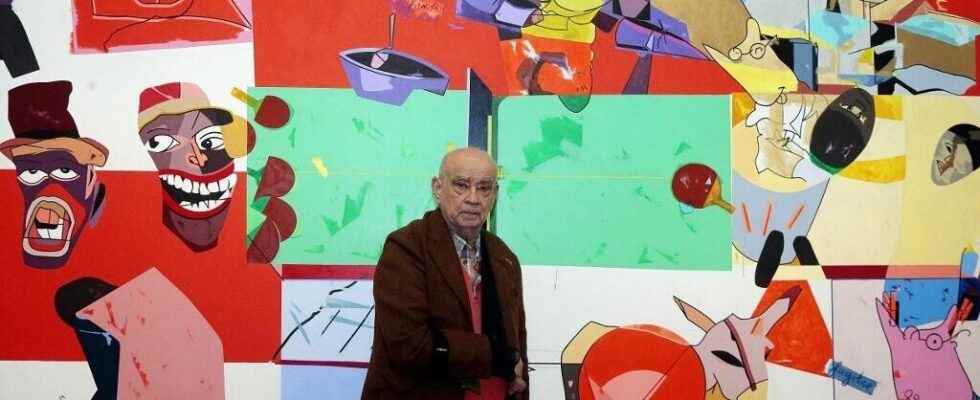The French artist of Haitian origin Hervé Télémaque, associated with the current of narrative figuration, died Thursday at the age of 85 in the Paris region where he was hospitalized. This was announced to AFP by his daughter, Élodie-Anne Télémaque.
Suffering from a serious autoimmune disease which had forced him to move around in a wheelchair and when he had lost the use of his right arm, Herve Telemaque continued to paint with his left hand. He is one of the 24 foreign artists currently exhibited at the Museum of the History of Immigration at the Palais de la Porte-Dorée as part of the exhibition “Paris and Nowhere Else”, which traces the years of artistic effervescence of after the war, from 1945 to 1972, and the attraction of the French capital for artists from all over the world.
Born in 1937 in Port-au-Prince, Haiti, Hervé Télémaque left his country in 1957 for New York before settling in France in 1961, where he worked in Villejuif. Disappointed by the “segregationist” atmosphere of the United States, where he did not return until 1973, he frequented the Surrealists in France, without formally joining the group and found his very particular way in the precepts of Pop art while defending creation. European, which he considers to be more critical of society.
Images and experience of his daily life
Since the late 1950s, he had created a vast body of work with a playful visual vocabulary, characterized by abstract gestures, cartoon-like imagery and mixed compositions, a multiple and complex work marked by his Haitian origins and Negritude. . Through paintings, drawings, collages, objects and assemblages, he combined historical and literary references with those of popular culture and consumerism.
►Also read: Hervé Télémaque, great figure of Haitian art: “We paint to exist”
Incorporating images and experiences from her everyday life, her colorful works weave connections between the realms of inner awareness, social experience, and the complex relationships between image and language. Exhibited in several major international museums, a retrospective was notably dedicated to him in France by the Center Pompidou in 2015, taken up at the Cantini museum in Marseille, then in 2016 at the Fondation Clément au François in Martinique, with a selection of around fifty paintings directly related to the Antilles and the ‘Africa.
In 2010, he sponsored a “Haiti Action Artists” auction, the objective of which was to restore to Haitian artists the means to rework and create lasting structures, following the January 12 earthquake.
(With AFP)
